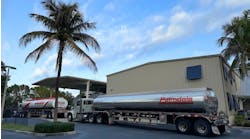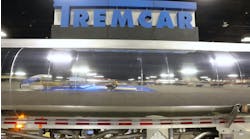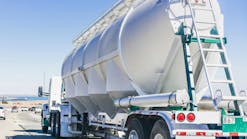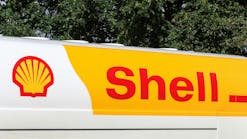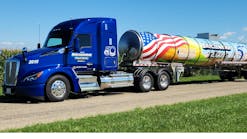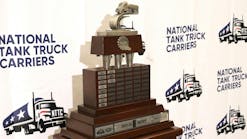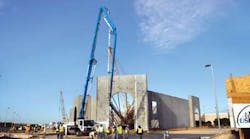CONTINUING budget challenges for state and local governments, uncertainty surrounding a new long-term federal surface transportation bill, and winding down of infrastructure investment under the stimulus law will drive a 4.4% contraction in the US highway and bridge construction market in 2011, according to the annual forecast from the American Road & Transportation Builders Association (ARTBA).
The real value of highway, street, and bridge construction is expected to fall to $78.5 billion, compared to 2010's estimated $82.2 billion, according to ARTBA Vice- President of Policy & Senior Economist Alison Premo Black.
One positive note: the amount of work completed on bridges was expected to increase to $25.4 billion in 2010, Black says. The value of real work in the bridge market has nearly doubled in the last decade as state and local governments have increasinglyaddressed long-deteriorating conditions.
Black notes that the stimulus, known as the American Recovery & Reinvestment Act (ARRA), had positive impacts on the market in 2010. According to October 31, 2010, Federal Highway Administration data, the value of ARRA-related transportation projects under construction was $18 billion. Nearly $16 billion has been paid out for construction work performed, and the value of projects completed was $6 billion.
State and local governments continue to struggle with the current economic situation and the aftermath of the recession.
“Although state and local investment typically accounts for 57% of the value of construction work, this percentage fluctuates and the state and local market share often will decline after a recession,” Black says. “States also tend to hold back on larger projects and simply maintain their programs until they know the new transportation funding levels from the federal government.”
Nevertheless, individual state highway and bridge programs will show growth next year, although it will be uneven, she says. There are 23 states that increased their contract awards during federal fiscal year 2010, which ended September 30, according to an ARTBA analysis of contract award data from McGraw Hill. Although some of these states have seen program declines over the last few years, the increase in contract awards is one positive indicator of state level market activity in 2011.
The model in the ARTBA forecast takes into account current economic conditions, state and local funding and federal investment. It assumes no major increase in federal investment over the next five years.
“This is not to rule out an increase in the federal-aid program, but we simply do not have any indication of what that investment level would look like without passage of a new highway/transit bill,” Black says.
The model also uses the projected Highway Trust Fund outlays from the Congressional Budget Office for future federal investment. It assumes that the United States will return to modest economic growth between 1.8% and 1.9% for 2011 through 2015. Increases in material prices and project costs are expected to be in line with general inflation at about 2%.
According to ARTBA, the market outlook would change if either federal, state, or local governments provided significant increases in their investment levels.
The outlook for other modes in the ARTBA forecast:
-
Airports: The real value of work done on airport runways is expected to fall 10% to $5.3 billion. Flat funding for the Airport Improvement Program and continued failure by Congress to pass a new aviation reauthorization program are key reasons for the reduction. The airport runway market also benefited from increased ARRA-related spending in 2009 and 2010.
-
Rail and transit: The real value of transit and rail work is forecast to drop slightly from $15.3 billion in 2010 to $14.9 billion in 2011. The longer term outlook for this sector will depend on federal investment through the New Starts program, private rail investment, and the general state of the US economy, Black says.
With the November 2010 Department of Labor report showing the construction industry suffered very significant job losses and with an 18.8% unemployment rate that is nearly double the national average, ARTBA President & CEO Pete Ruane warned that continued congressional inaction on the multi-year highway/transit investment bill will likely lead to further job losses in the sector in the coming months.
“Political inertia at both ends of Pennsylvania Avenue is wreaking havoc with the construction industry and the nation's transportation improvements programs,” Ruane said.
Meanwhile, in an economic report, “US Transportation Construction Industry Profile” — the first ever to examine how investments in the United States' transportation infrastructure stimulate business activity and government revenues throughout the nation — ARTBA's economics team concluded that there are enormous challenges facing the US transportation infrastructure network that will have a direct impact on productivity and economic competitiveness in the years to come. These issues include:
-
Without changes to current policy, the revenues raised by all levels of government for capital investment will only be about one third ($66.6 billion) of the $200 billion the Department of Transportation (DOT) believes necessary to maintain and improve the nation's highways and transit systems.
-
The estimated cumulative gap between federal revenues for transportation and the investment needs of the system are $400 billion from 2010 to 2015.
-
Traffic congestion cost Americans living in the nation's 437 urban areas $87.2 billion per year in lost time, wasted motor fuel and vehicle wear and tear.
-
On average, urban commuters experience the equivalent of one work week (40 hours) per year stuck in rush hour traffic. In total, Americans spend four billion hours per year stuck in traffic.
-
From 1980 to 2006, the vehicle miles traveled (VMT) in the United States by automobiles increased 97%; VMT by trucks increased 106%. Meanwhile, road capacity, as measured by the number of highway lane miles added to the system grew just 4.4%.
-
Over half of the miles on the federal aid highway system are in less than good condition and nearly 17% need major reconstruction, repair, or rehabilitation. Nearly 25% of the nation's bridges are structurally deficient or functionally obsolete.
-
Roughly one quarter of the nation's bus and rail assets are in marginal or poor condition.
-
Real highway spending per miles traveled in the United States has fallen by nearly 50% since the federal Highway Trust Fund was established in 1956. Total combined highway and transit spending as a share of Gross Domestic Product (GDP) has fallen by about 25% in the same time period to 1.5% of GDP today.
-
The federal fuel tax, which finances highway and transit capital investments and is not adjusted annually for inflation, has
lost 33% of its purchasing power since it was last raised
in 1993. ♦
